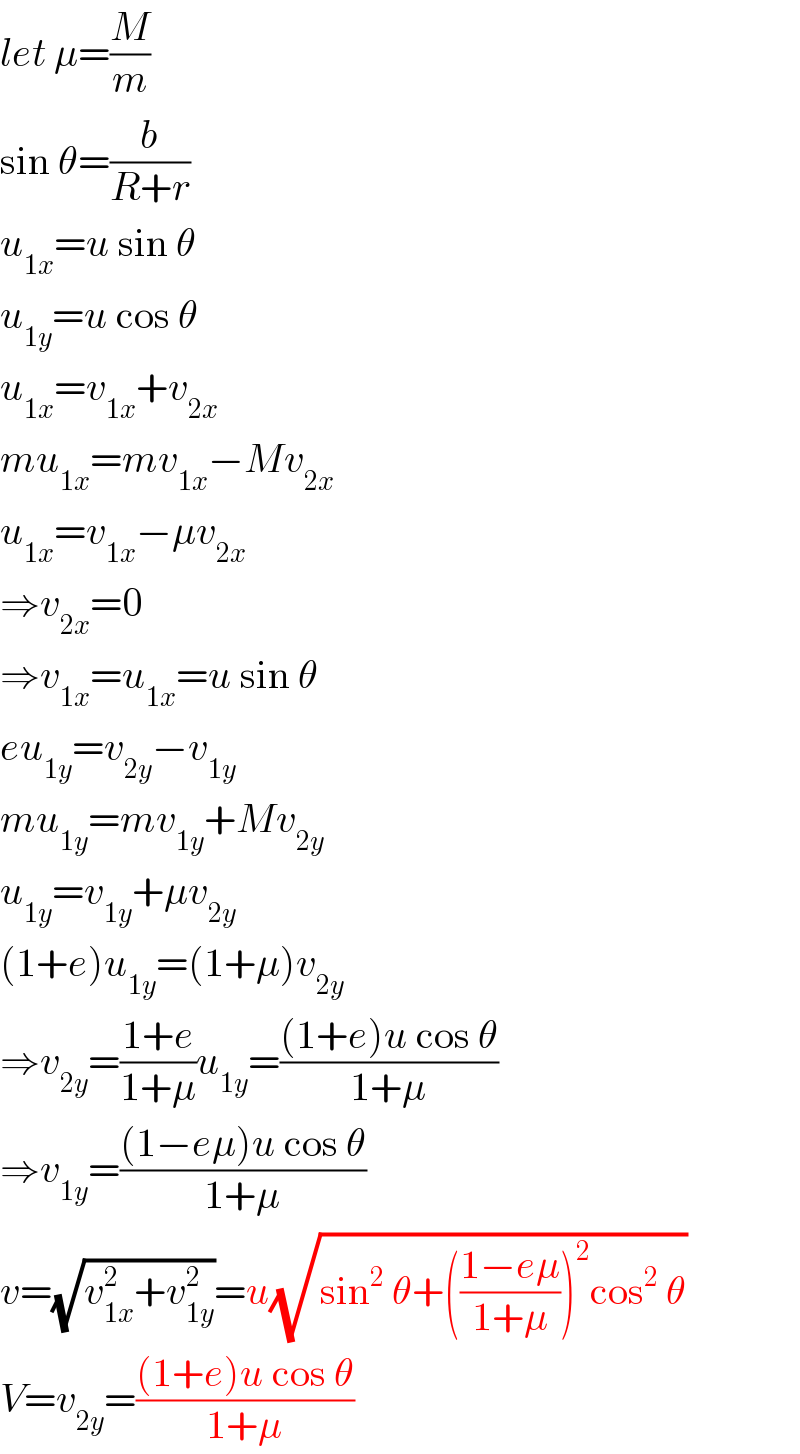
Question and Answers Forum
Question Number 71939 by ajfour last updated on 22/Oct/19

Commented by ajfour last updated on 22/Oct/19

Answered by mr W last updated on 22/Oct/19

Commented by mr W last updated on 22/Oct/19

Commented by ajfour last updated on 23/Oct/19

